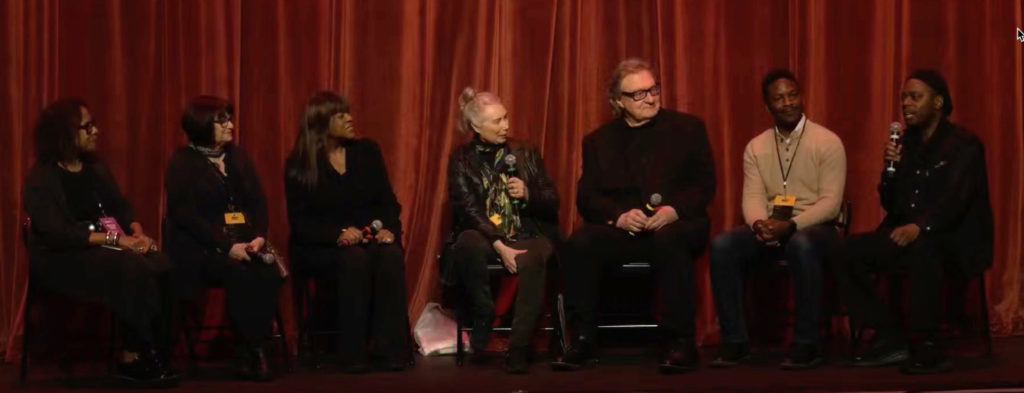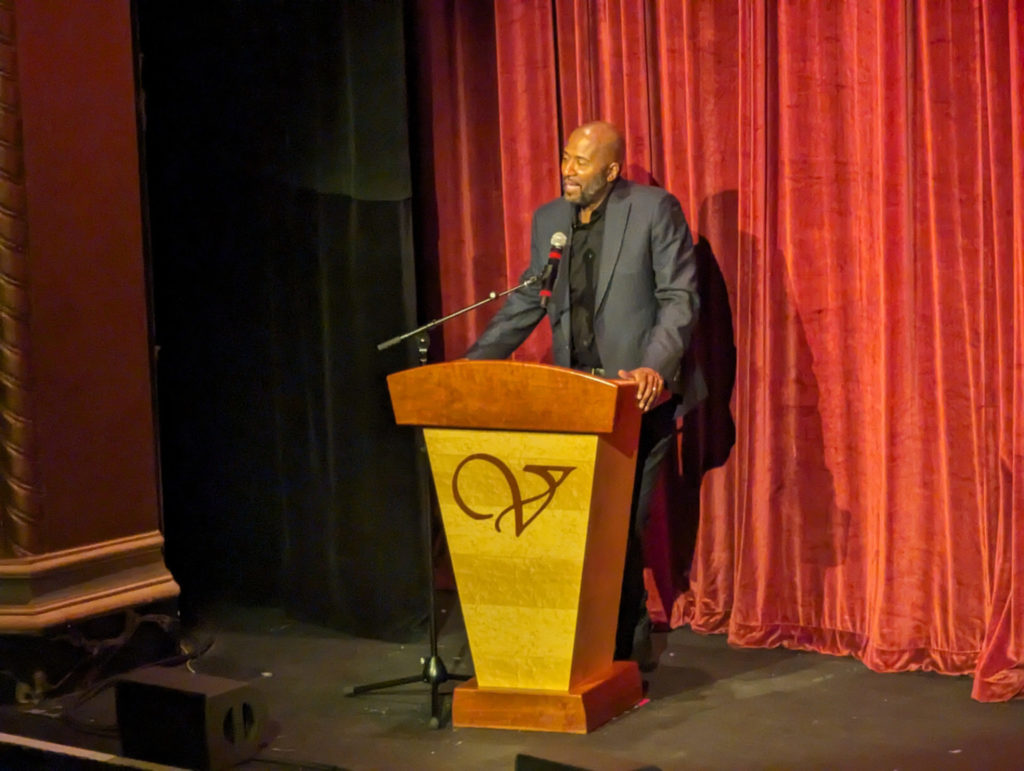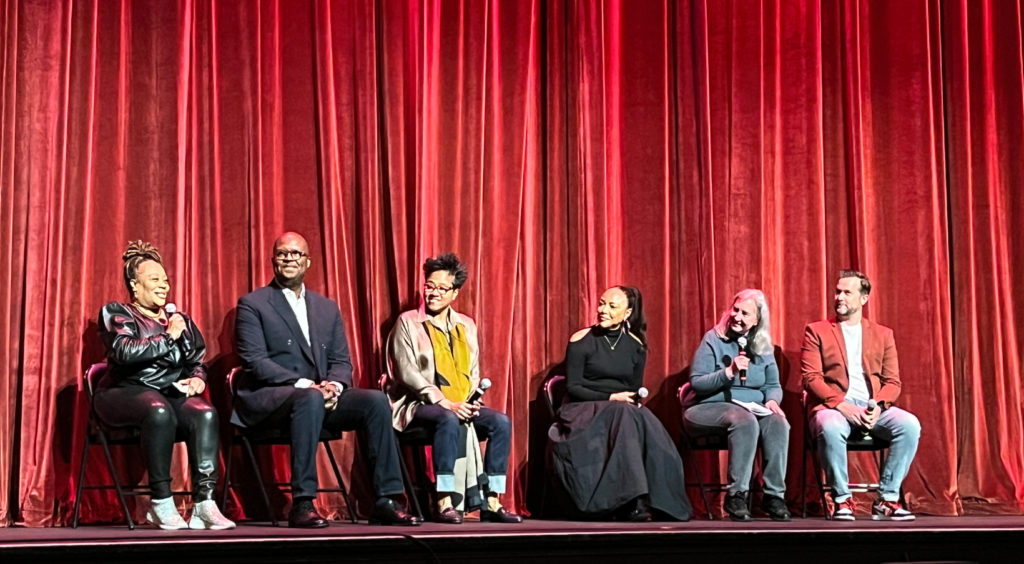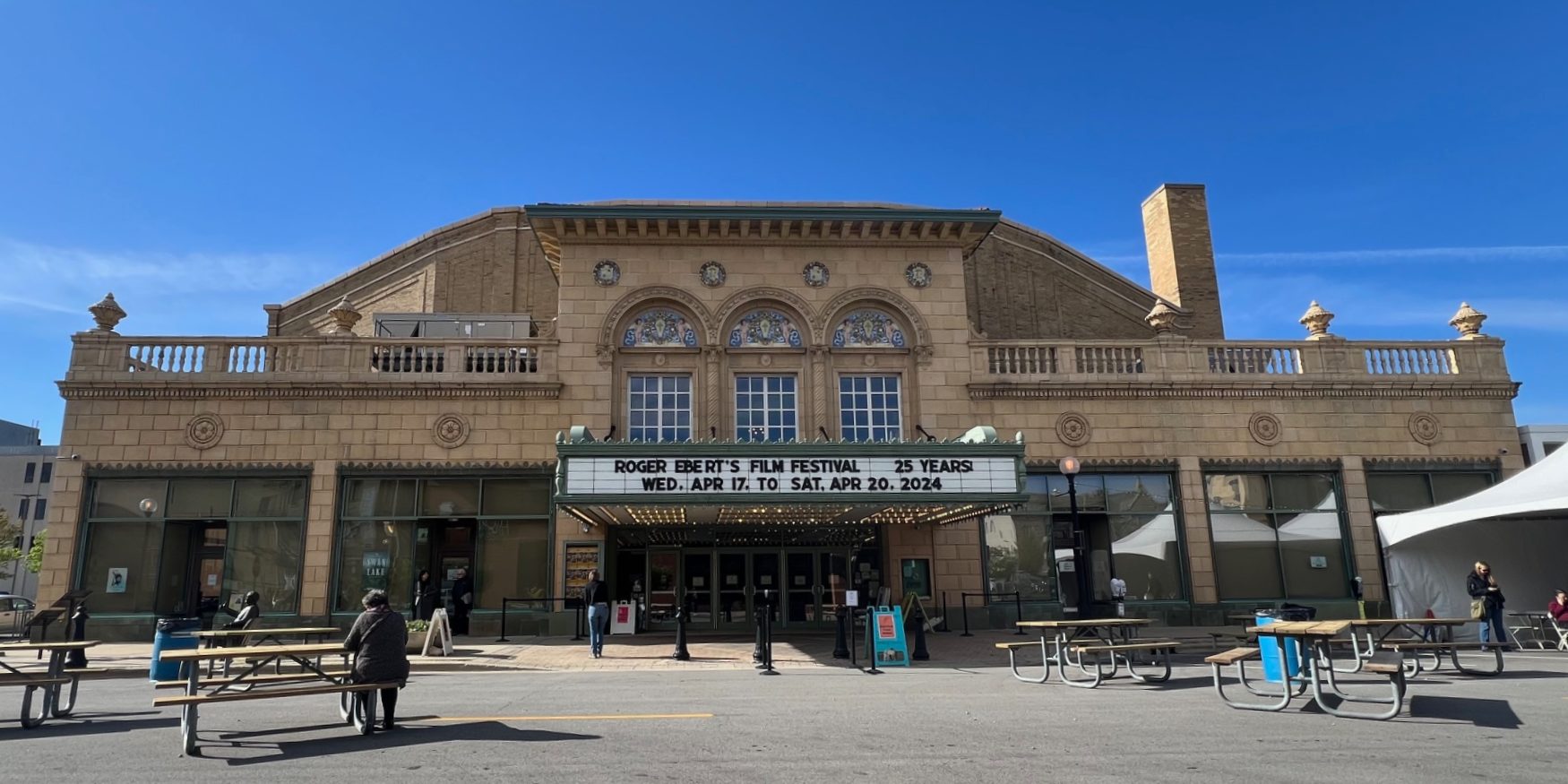The 25th Ebertfest was, as it is every year, a spectacular celebration of film, filmmakers, and fans. Several Smile Politely editors and writers attended the festival and offer some reflections. If you missed the festival, you can find many of the films on a streaming platform near you, even though streaming can’t hold a candle to watching movies in community at our gorgeous Virginia Theatre.
— Amy Penne, Arts Editor
Star 80
I didn’t enjoy watching Star 80 on opening night of Ebertfest. However, I am still thinking about it. I’ve seen every moment Bob Fosse ever put on film. All That Jazz (1979) was the first R-rated film my mom took me to see at the theatre. I’ve sung along with his Liza with a Z (1972) television special since I could stand in my room and hold a brush as a microphone. And then there’s the incomparable Cabaret (1972) and Lenny (1974). Fosse is still the only artist to win the triple crown in one year (1973) with an Emmy for Liza with a Z, a Best Director Oscar for Cabaret, and two Tony awards (choreography and directing) for Pippin. His final film, 1983’s Star 80 is painful to watch, but it is an urgent story. Eric Roberts, who introduced the film at Ebertfest, called Fosse a genius, but noted that the film “was not at all fun to work on. But wow — the story was, is, so important.” Tracing the rise to stardom and subsequent brutal murder of Playboy model Dorothy Stratton, Star 80 is full of all the sexist decadence you’d expect from an early 80s film about Hugh Hefner (played by the inimitable Cliff Robertson), the Playboy culture, and explicit misogyny. Gene Siskel included the film in his ten best from 1983 and across the aisle from him, Roger Ebert awarded it four stars. It’s a harrowing story that reveals just as much about our own time as it revealed about the early 1980s. (AP)
The Light of Truth

Chaz Ebert, Roger Ebert’s widow and champion of all things arts in both Chicago and Champaign, lauded Ebertfest audiences for our consistent love of documentaries before introducing director Rana Segal. And as a lover of all things documentary filmmaking, I am grateful year after year for the outstanding documentaries curated by Ebert herself and the festival’s director, Nate Kohn. Rana Segal’s heartwarming film, The Light of Truth, brilliantly braids the stories of suffragist and civil rights activist Ida B. Wells, contemporary sculptor Richard Hunt, and Chicago’s Bronzeville community together in a flawless documentary about the role art plays in preserving our history. Segal adeptly tells the story of Ida B. Wells’ fierce and tireless work to improve the lives of all Black men and women after the Civil War while mirroring Hunt’s passion for that story in his three-story sculpture, “The Light of Truth.” Hunt, sadly, passed away last December and couldn’t be with us to enjoy this reflection on his art and legacy. I was particularly moved by the focus on Hunt’s command of steel in making this structure and the way he worked with his team of artists to bring the work to completion. (AP)
The Teacher’s Lounge
Ambiguities abound in The Teachers’ Lounge, a riveting film that was nominated for a Best
International Feature Film Oscar in 2024. The story takes place in a German secondary school where Carla Nowak (played by Leonie Benesch) teaches math and physical education. She’s called into a meeting where it’s revealed that stealing is occurring in the school. Two students who are part of the school’s council area also at the meeting and urged by the adults in the room to say what they might know regarding the crimes. It’s an uncomfortable moment, and only Carla relates to the students that they aren’t obligated to say anything. Carla’s lone support for the two students is ironic given how viciously the school’s student body turns on her later. Carla is a hardworking, conscientious teacher, but she makes an error in judgment when trying to solve the thievery by using invasive technology. She accuses a school employee of the crimes — a mother of one of her students — leading to her chaotic undoing. Some who see this film will say the students have too much power; others will say the school has a leadership problem with too much internal strife. Both observations are valid. The action in The Teachers’ Lounge takes place almost solely in the school, further enhancing the film’s nerve-wracking energy. Issues such as racism, overbearing parents, and activist journalism add to the tension of this excellent movie. (SN)
Cookie’s Fortune
The Audience’s Choice pick this year was Cookie’s Fortune, a 1999 noir comedy directed by Robert Altman. Before the film, Chaz Ebert spoke about the importance of connections, and that’s truly what this movie was all about. Set in a small town in Mississippi, everything in the film connected, from a small detail about a piece of furniture to a borrowed fruit bowl to family origins. The fast-paced film was saturated in dramatic irony, making for so many moments of anticipation and humor for the audience.
Cookie’s Fortune had really did have everything: guns, booze, true love, an Easter play, a Scrabble match in a jail cell, a thief caught (literally) with their hand in a cookie jar, and a hilariously satisfying ending that I loved watching on the big screen — even at 9 in the morning. (AB)
Eternal Sunshine of the Spotless Mind
Walking into the Virginia for the screening of the classic Eternal Sunshine of the Spotless Mind, I felt a bit giddy. Not just because watching a movie in the middle of the day is just plain fun, but it’s also a reminder of why a theatre is special. The wafting popcorn aroma is contagious, and patrons buzzing about ahead of the film getting to their seat provides an energy during an organized film festival such as Ebertfest. Chaz Ebert introduced the film and had some remarks, asking the audience who was seeing this film for the first time. About half of the audience raised their hands, which was awesome to see. Everyone was a little more excited to get the film rolling.
You can read a summary of the film, starring Jim Carrey and Kate Winslet with a nice supporting cast (Kirsten Dunst, Elijah Wood, Mark Ruffalo to name a few), so I’m not going to rehearse the film’s plot. There’s nothing quite like seeing an all-time great in this setting. This particular film had folks laughing throughout, however the emotional roller coaster reminds us all that ultimately, life is brief, and moments are fleeting. When you want to bury an experience as deep as you possibly can, there will be a part of you that always remembers, even when you want to erase it. Eternal Sunshine is a beautiful reminder that focusing on what is in front of you at the moment is far more important that whatever else is happening between your ears. (PS)
Little Richard: I Am Everything
The title of this film drips with the bombast that you expect to hear about Little Richard, especially if you were a Gen Xer and only caught little glimpses of his personality on talk shows and occasionally an awards show. My perception of him was an egotistical, flamboyant artist, who kept screaming “I’m the best” because he was trying to convince himself he was any good at all. Although this perception was accurate, Lisa Cortez’s film shows that Little Richard was so much more, sometimes less, but also responsible for building the institution we know as rock and roll.
Cortez had the good fortune of producing this film with several renowned film studios and iconic music institutions allowing her to step outside of standard documentary filmmaking to do her subject justice. She broke the 4th wall by having subjects look into the camera and included scholars and ethnomusicologists to provide insight to understand how Little Richard impacted music, pop, and queer culture. A visual effect of glittery dust was used throughout the film to create an energy that helped the narrative navigate the many ups and downs in his incredible life.
I may have originally gotten to know Little Richard late in his career, but I never imagined he was directly responsible for nearly everything rock music came to be. Cortez’s film set me straight on how this man built the foundation of the genre of music that has given me so much joy. I’ll forever be grateful for this film and for Little Richard himself. (DP)
The Best Man

Ebertfest guest Malcom D. Lee wrote and directed his debut movie, The Best Man, to show audiences the richly complicated lives of Black men and women in early adulthood. At the time of the movie’s release in 1999, Lee felt Black actors were too often typecast characters, like the ubiquitous token Black friend or the Black person from the “hood.”
“If I can go see Four Weddings and a Funeral and Muriel’s Wedding and My Best Friend’s Wedding and enjoy them,” Lee said after the Ebertfest screening of the film, “then everyone should be able to enjoy The Best Man.” Audiences have indeed enjoyed the movie, which racked up solid box-office numbers during its opening-weekend release and has since grossed more than $34 million worldwide. The Best Man resonated with so many people, in fact, that it spawned an award-winning eight-part series sequel on Peacock, The Best Man: The Final Chapters. The Best Man will ring true to anyone who recalls the days of constantly attending friends’ weddings following their college years. The deep friendships and conversations among the four male characters in the movie, all of whom are quite different from one another, are perhaps the most endearing aspects of the story, which Lee described as a “drama with comedic parts.” (SN)
Albany Road

This fully independent film is so independent, the married couple who made it were only able to do so after refinancing their home. Writer-director Christine Swanson and her producer husband Michael Swanson were truly dedicated to making this “romantic dramedy with a twist.” In financing it themselves, they were able to make the movie they wanted, without input from any studios. The movie was funnier than I expected, and the audience laughed a lot. The Ebertfest audience was absolutely overjoyed to see Champaign and Piatt Counties on screen — Willard Airport, Allerton Park, and Sidney Dairy Barn feature prominently in the film, as it was shot mostly in the area, with help from producer Brett Hayes of Shatterglass Studios. Many of the crew members were in the audience and seeing the finished product for the first time. I’m sure it was a real treat for them.
The film stars Renée Elise Goldsberry (who was supposed to be at the post-screening panel, but was not), and Lynn Whitfield, an American Treasure. They, and all of the actors, bring their immense talents to the screen and the script. There is no trailer or release date information for Albany Road, so you’ll have to follow the Swansons’ production company, Faith Filmworks, on socials for more information. (JH)
Contributors to the article were Alyssa Buckley, Jessica Hammie, Sal Nudo, Amy Penne, Derek Philips, and Patrick Singer.








